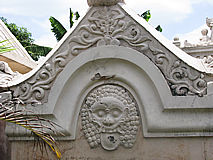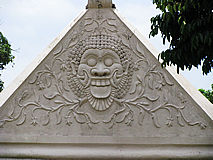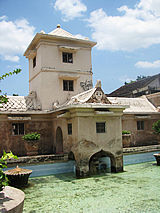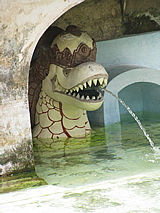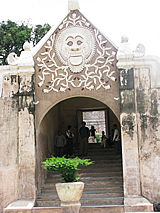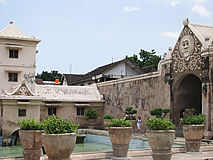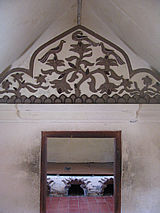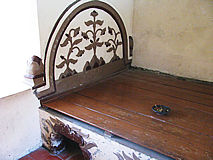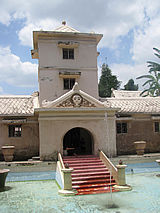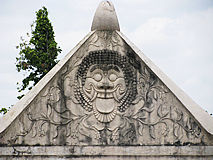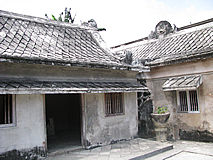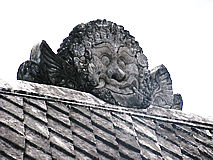CultureRenewalInitiative
HEALING THE PLANET
To begin with yourself
VIVA! JAVA
* Javanese mysticism
(Kebatinan) & Traditional Javanese religious tolerance: a model to the world?
*The Yogya Kraton Myth
*Taman Sari
*The Gunungan
*Tutup Ngisor
*What we can do for Java....
*Java: Land of Kala, its Candi's (Temples):
*Borobudur 1
*Borobudur 2
*Borobudur 3
*Borobudur 4
*Borobudur 5
*Borobudur 6
*Candi Mendut
*Candi Pawon
*Candi Ngawen
*Candi Sari
*Candi Kalasan
*Candi Sambisari
*Candi Prambanan
*Candi Lumbung
*Candi Bubrah
*Candi Sewu
*Candi Plaosan
*Candi Gebang
*Candi Ijo
*Candi Banyunibo
Taman Sari
("Water
Castle")
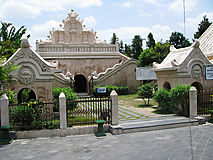 The entrance |
SULTAN'S PLEASURE PALACE |
 A gate with Kala Head |
|
||
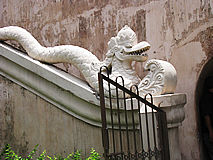 Two Dragons |
Before coming to Java I had seen a YouTube clip about Taman Sari. I was intrigued by its "art-deco" like Kala's. Arriving with my friend scooter-driver at Taman Sari there was great excitement. I knew intuitively, that this would be a memorable day, full of surprises. |
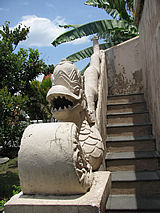 |
|
||
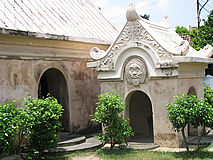 |
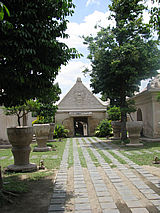 The lane with the opening to the main pool |
|
Again a Kala |
||
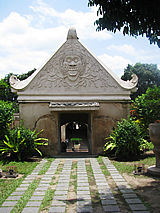 |
At the entrance an official offered me his services as a guide. Assuming that he was just another "guide", being after money, I declined his offer. So I went on on my own, immediately being struck by the presence of the many Kala Heads*. My first thought: they both resemble the Goddess Kali (having in common the tongues out of their mouths) as well as LINK Western Green Men. The latter also have foliage coming out of their faces. * More on Kala's in the other sections of VIVA! JAVA. |
 |
The pool with the Sultan's "watch tower" from where he could enjoy the view of his concubines entertaining themselves in the water |
||
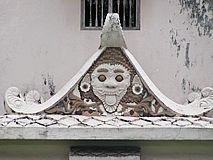 Kala decoration halfway the tower |
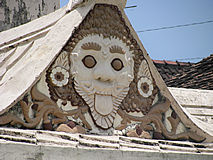 The tongue out of its mouth: it could even be a sensual, erotic gesture.... |
|
Under the Kala image: The Sultan as Crowned Dragon?
|
||
 On the other two sides of the pool: two Kala's |
Soon I arrived at the center of the complex: the water pool, in which the concubines of the Sultan used to play. Slowly the symbolism became more complete, especially by seeing the two Dragons at the entrance and subsequently this crowned Dragon Head in the pool. The Sultan had used very ancient symbolism. The Kala's being the original Great Mother with he himself as "Son/Lover", embodied by the Dragon. |
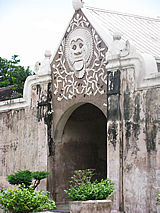 |
|
||
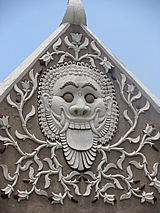 Very much looking as Western Green Men |
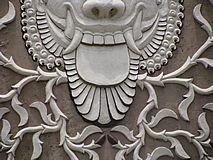 With foliage coming out of (his) Her mouth |
|
Overview |
||
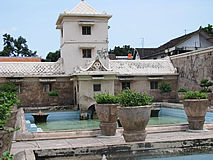 Ditto |
Later I met the official once again. This time I wanted my view confirmed, so I asked him about the meaning of the Kala's. From that moment on a very lively discussion developed in which he very kindly helped me understand a lot more details about Kala, the LINK Kraton Myth, the lifestyle of the Sultan, while visiting the various interesting corners of Taman Sari. |
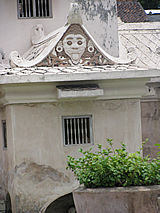 Again Kala with Sultan's Dragon head hidden behind the flower pot |
A hall with very low door with view on Sultan's bed |
||
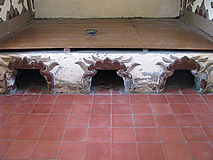 Three openings for heating the bed |
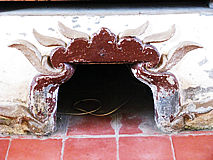 Decorated with symbolism of Mt Merapi (flames, fire) |
|
His place of rest/play
|
||
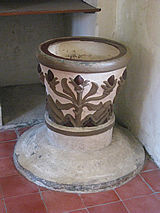 Water container? |
The first very interesting topic was why the Sultan had chosen Kala as the central symbol of his "Water Castle". Why at the same time every link to Islam was missing! It appeared that the Sultan, in order to keep order, harmony and content between the various religious groups in his Kingdom, purposely had chosen a central symbol that would not offend any of his followers. Chosing (a) "God" would have the risk of interreligious trouble. So, he chose a symbol that is beyond all Gods, an image from pre-Hindu, pre-Buddhist, pre-Christian and pre-Islam times, a symbol from the common heritage of all Javanese. A symbol he hoped would unite and not divide. |
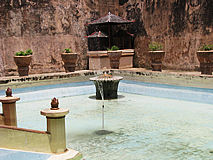 The ladies'private pool |
Not surprisingly with Kala as Protectress |
||
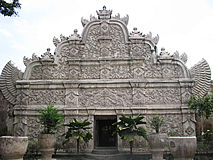 The beginning of the Meditation Sanctuary |
 The gate to it |
|
|
||
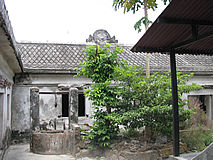 Surprisingly simple corner indicating that the Sultan had a deep longing for seclusion |
Was the Sultan aware of the True Nature of Kala as the original "Great Black One", with its roots in (very) ancient times, having evolved further as Mahakala, the MotherGoddess Kali and subsequently becoming part of many Javanese temples? My friend the official had a very open mind, not troubled by common mindsets. He very much held the idea for possible. Illustrating it with the LINK Kraton Myth (elaborated in another section), in which Mount Merapi is considered the Womb of the Earth, giving birth as well as destroying, exactly those archetypical aspects which are contributed to the original Great Mother |
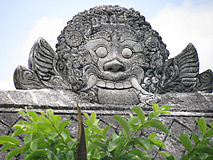 "God of Time" or Original Great Mother? |
Door to the Meditation Room |
||
 Personal Protectress of the Sultan |
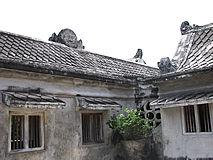 |
|
Guarding his Meditation Room |
||
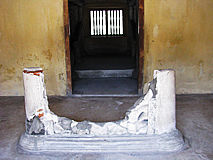 Entrance of the Meditation Room with remains of Gunung Merapi |
Last but not least. The Sultan had a very intrigueing habit. Before meeting his advisors and other representatives of the people, he retired in loneliness, taking refuge in Kala. The people waiting outside in silence and reverence. After a while, after having opened his Heart to Divine inspiration and wisdom he came out, starting to share it with everybody present. It is (accidentally....) the same concept I have been practising for quite some time. Supported by the Sultan I very much feel inspired to go on with it e.g. putting even more emphasis on the whole process |
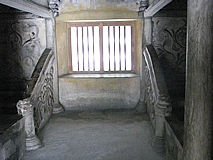 This simple Meditation Room says somehing about the authentic soul of Sultan Hamengkubuwono I |
|
||
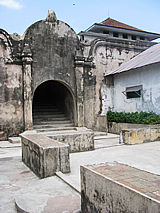 The Meeting Place |
1997-2011
© Copyright Han Marie Stiekema. All rights reserved.
Everyone may use this website as a source of inspiration. However, since it
is freely given, no-one can claim, copy or derive any text, rights,
position or status from this website.
Last revising: 07/28/12
